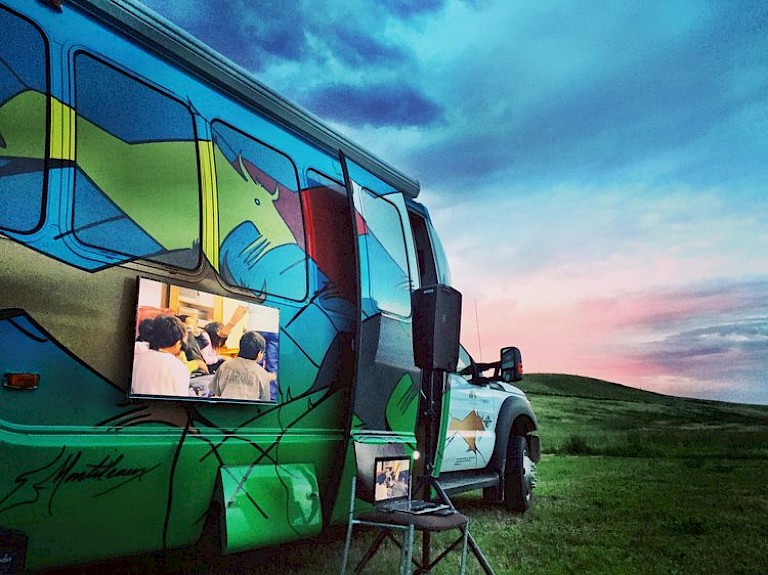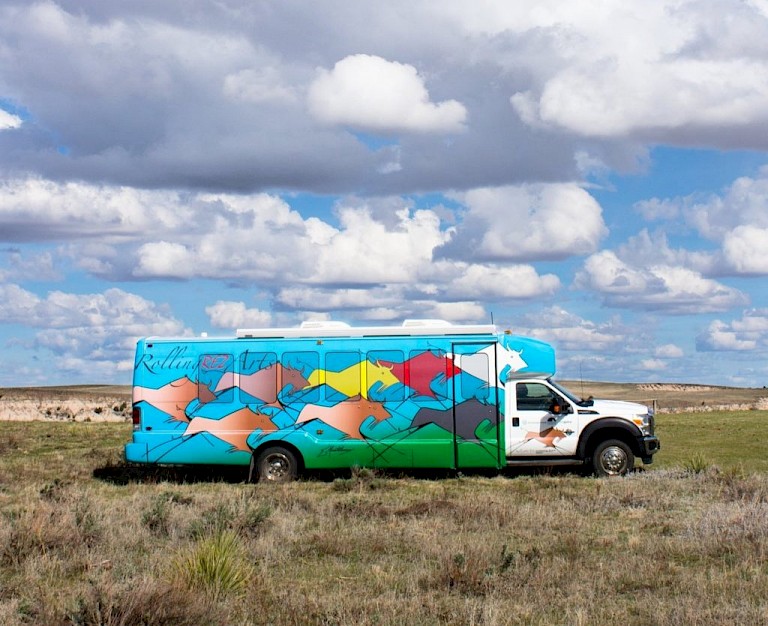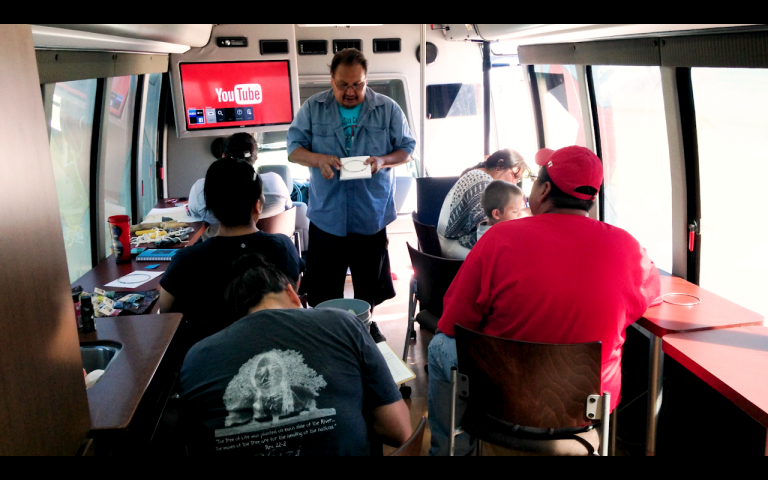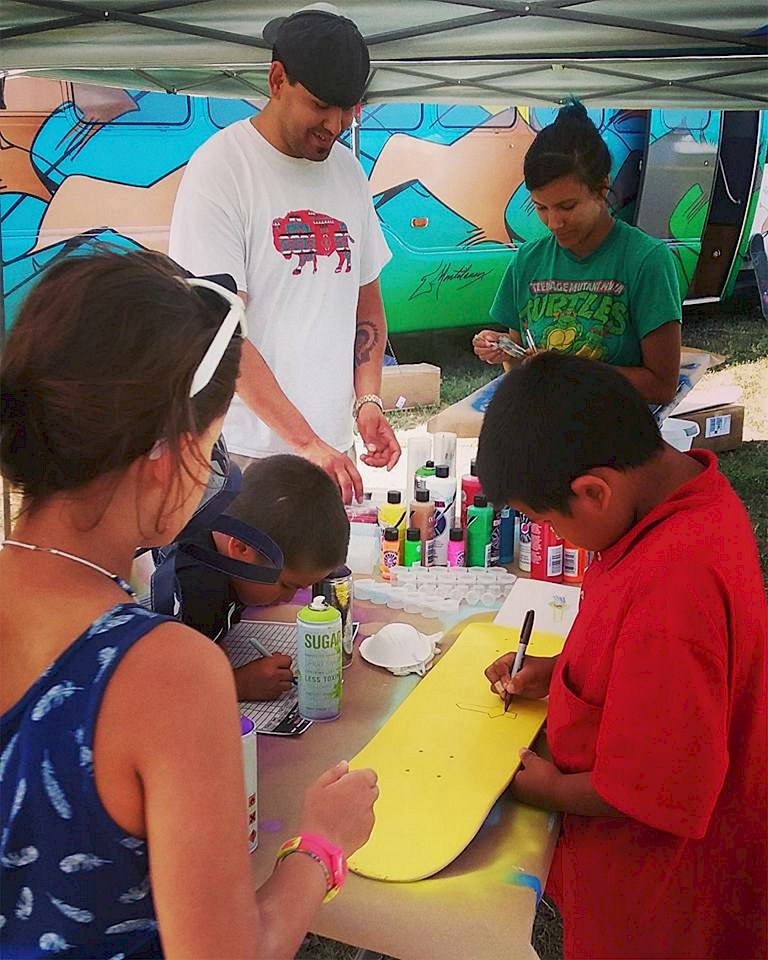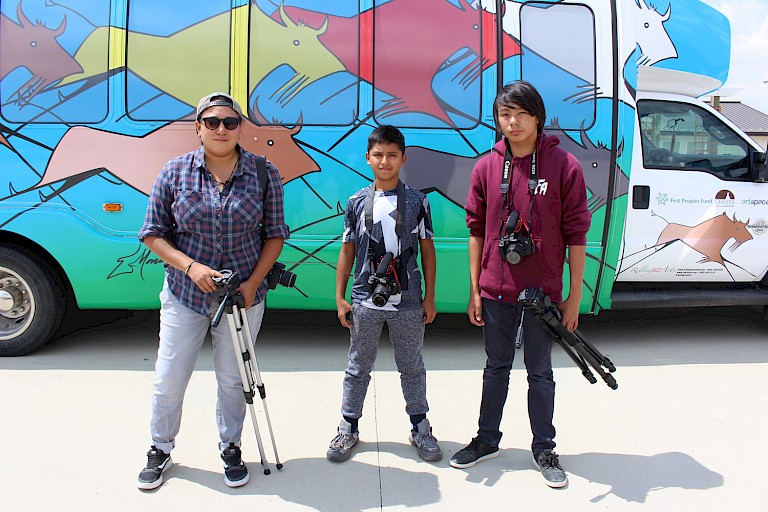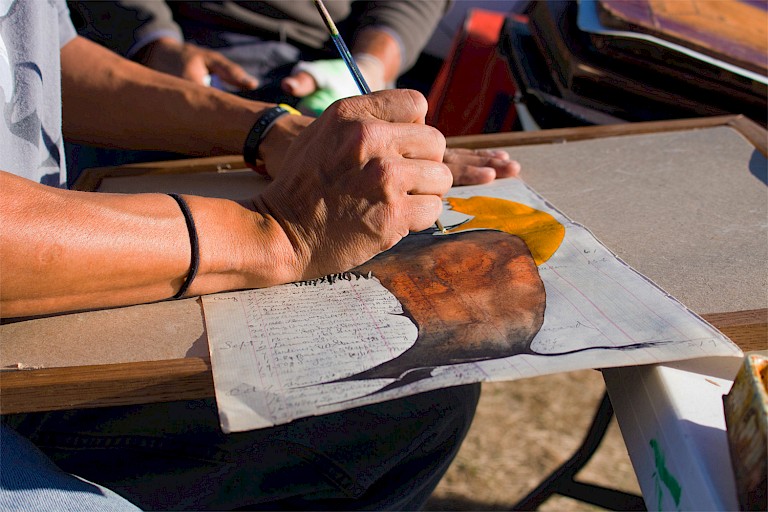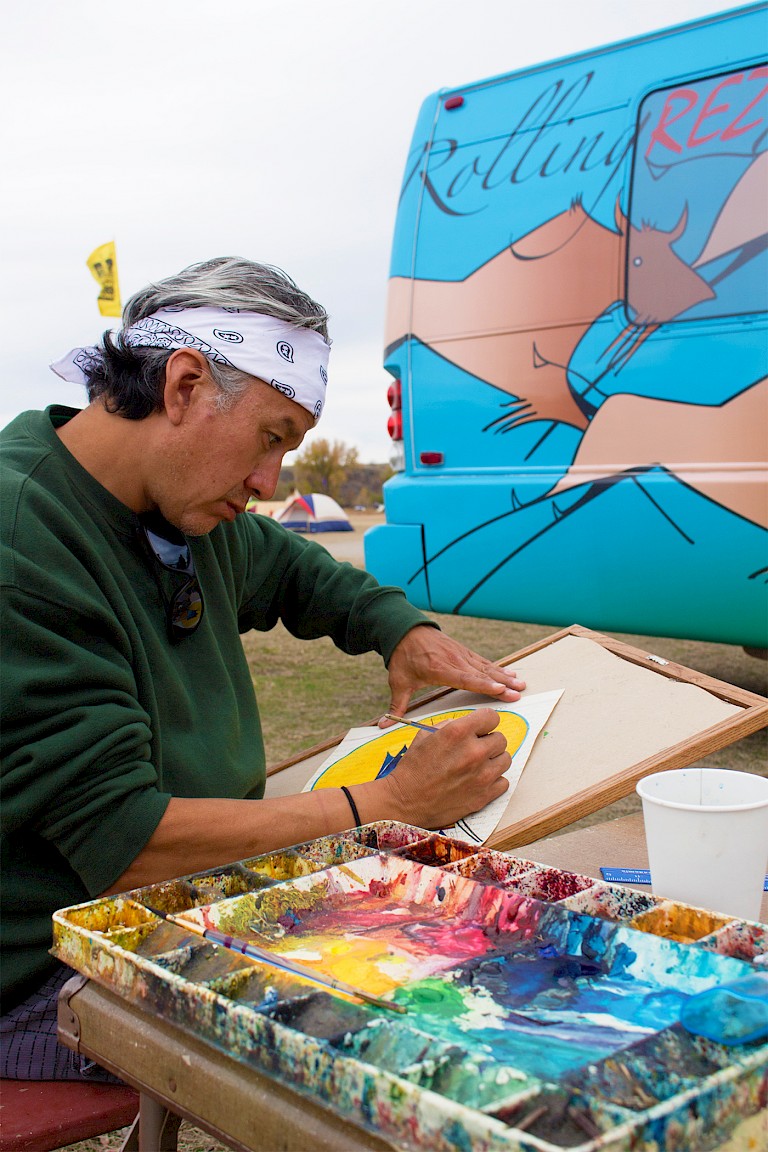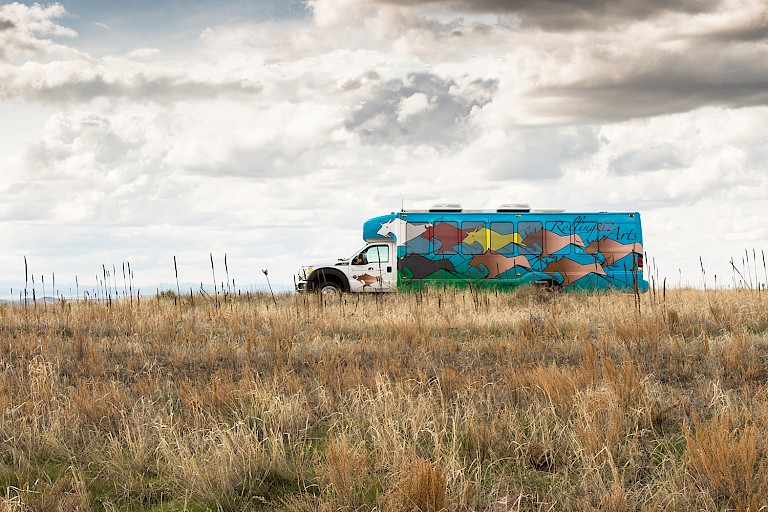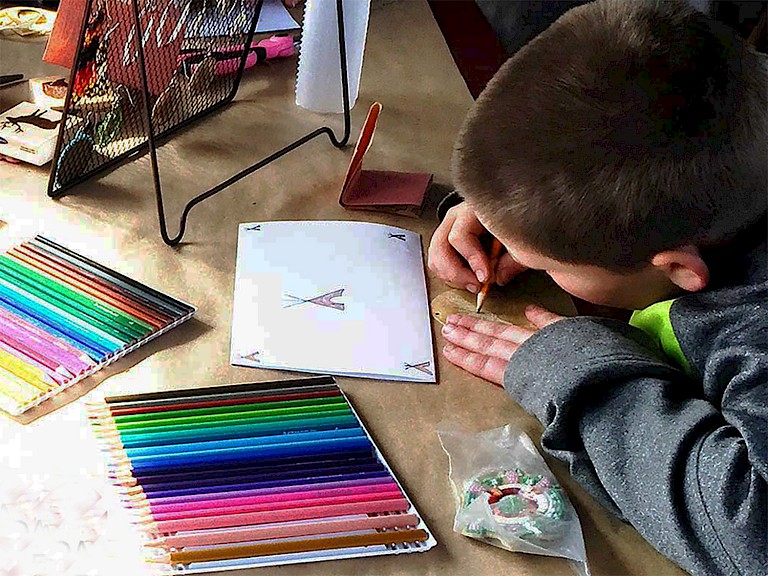



Rolling Rez Arts is a response to core needs of artists working in Pine Ridge. Spanning 3,469 square miles, a land mass roughly the size of the state of Connecticut, distance combined with lack of access to vehicles, internet, and other resources has created both physical and economic barriers to a thriving arts economy, despite a relatively high number of artists working in the region. The roots of Rolling Rez Arts began in a 2011 survey undertaken by First Peoples Fund, Artspace, and Dr. Kathleen Pickering Sherman from Colorado State University, published in the report Establishing a Creative Economy: Art as an Economic Engine in Native Communities (2013). The study found that more than half of the Native households on Pine Ridge run home-based small businesses, 79% of which are related to the arts. Despite the prevalence of working artists, artists were not thriving economically—61% of emerging artists were found to have annual incomes of $10,000 or less, well below the poverty level. However, the study noted the potential for the arts economy to grow and identified six areas of need:
Access to credit and capital
Access to supplies
Increased business knowledge
Access to informal (social) networks
Access to markets
Space (for trainings, creating work, mentoring, connecting with peers, etc.)
Conversations inspired by the report led to the development of Rolling Rez Arts as a cross-sector collaboration between First Peoples Fund, Lakota Funds, and Artspace. Conceived as a mobile arts and resource unit, the bus visits all nine reservation districts, building upon First Peoples Fund’s expertise in supporting and empowering artist entrepreneurs, creating avenues for Native artists to share their work, and partnering with Community Development Financial Institutions. As an arts space, the bus offers classes by teaching artists ranging from life drawing, to oil pastels, peyote stitch beadwork, moccassin making, cradleboard making, traditional hand drums, basic sculpting, film editing, screen printing, rawhide art, and more. Supplies are provided for workshop participation, and artists are given extra supplies to take come.
On the business development side, Rolling Rez Arts offers professional development and business training classes, including financial management, internet use, pricing, and marketing. Partnerships with the Lakota Federal Credit Union and Lakota Funds have enabled the bus to serve as a mobile banking center as well, where artists can cash checks, make deposits, and complete loan applications, providing important access to financial resources that were not previously accessible for many community members. Additionally, the bus brings buyers from the Heritage Center at the Red Cloud Indian School, the primary regional source of arts sales, to rural communities to purchase artists’ work. While this type of outreach had long been a goal of the Heritage Center, who hosts buying days at its location in Pine Ridge, the organization lacked the capacity for such travel, which Rolling Rez Arts now provides. In addition to easing the logistics of travel, this partnership has enabled the Heritage Center to expand the social enterprise impact of its gift shop program and break down institutional barriers to connect with artists in an accessible and non-intimidating context. Rolling Rez Arts therefore provides a catered spectrum of services, from artistic skill building and community building, to opportunities to sell work, to financial services for developing a sustainable business.
Beyond economic, educational, and network impacts, Rolling Rez Arts also contributes an important perspective to larger discourses on placemaking. Writing about the idea and term “placemaking” in a recent issue of Public Art Review, Mona Smith (Sisseton-Wahpeton Dakota Oyate) noted colonialist undertones in the term and idea, wherein humans assert dominion and attribute meaning to a place, a notion that she emphasized runs counter to many Native perspectives and reveals a stance more akin to “place taking” (36-37). Contextualizing Rolling Rez Arts through the concept of wolakota, “in peace” or “a way of life,” First Peoples Fund President Lori Pourier (Oglala Lakota) wrote that, “Indigenous peoples on this continent cannot separate art from land from who we are. Lakota creation stories and our tribal teachings tell us how we came to be on this earth, that we are relatives of creation itself. Place is another of our most essential and powerful relatives” (Pourier, 90). In this vein, she described Rolling Rez Arts as “an artist-led model of economic development and social equity for artist and culture bearers,” underscoring, “We believe artists are stronger when they celebrate their own resilience and vitality and begin to envision a hopeful future, and even re-imagine a new and equitable wolakokiciyapiI (way of life in community)” (93).
Since 2016, Rolling Rez Arts has offered more than 100 classes across 18 unique locations and employed 22 teaching artists, who have provided 335 hours of instruction to 620 participants. The bus has traveled over 8,000 miles across Pine Ridge, as well as to Eagle Butte (Cheyenne River Reservation) and the Sacred Stone Camp at Standing Rock. While new data is not yet available on changes in artists’ income, early signs point to expanded skills, networks, and opportunities bolstering the work of participant artists, while Rolling Rez Arts Program Manager Bryan Parker (White Mountain Apache, Muscogee Creek, Mississippi Choctaw), notes that teaching artists are benefiting as well through increased confidence, income, and experience.
First Peoples Fund Communications Manager Cecily Engelhart (Ihanktonwan and Oglala Lakota) succinctly pointed to the central importance of Rolling Rez Arts in responding to the challenges of rurality, transportation, and community building, commenting that, “The exceptional lack of infrastructure in our communities means that any sort of development work is centered around basic necessities (water, sewer, electricity, roads, etc.) instead of ‘non-essential’ things such as art. However art is how our people move through our lives, how we celebrate, how we mourn, how we connect to our spirituality, and part of our sacred relationship with the land. Art should be at the core of solution making, as it is so essential to healing our collective trauma as Indigenous people” (correspondence with researcher).
By drawing upon data around artist needs, centering Native perspectives, and responding to the unique challenges and opportunities across Pine Ridge, Rolling Rez Arts is primed to continue to expand and deepen its impact. Going forward, this work will be enhanced by a hub—the Oglala Lakota Artspace in Kyle, South Dakota—a collaboration between First Peoples Fund, Lakota Funds, and Artspace scheduled to open in 2019. Offering studio spaces, gathering spaces, computers, classrooms, a store, galleries, and administrative offices, the Oglala Lakota Artspace builds upon the collaboration behind Rolling Rez Arts and will provide the nimble mobile unit with a home base from which it can continue to travel and provide needed resources.
Works Cited
First Peoples Fund, Artspace, Colorado State University, Leveraging Investments in Creativity, and Northwest Area Foundation. Establishing a Creative Economy: Art as an Economic Engine in Native Communities. (2013). http://www.artspace.org/sites/default/files/public/downloads/place/document-market-study.pdf
Pourier, Lori. “Art: A Way of Life in Native Communities.” How to Do Creative Placemaking: An Action-Oriented Guide to Arts in Community Development. Washington, D.C.: National Endowment for the Arts, 2016. https://www.arts.gov/sites/default/files/How-to-do-Creative-Placemaking_Jan2017.pdf
Smith, Mona. “PlaceMAKING?” Public Art Review. 57(36-37): 2018.
Interview Participants
Cecily Engelhart, Communications Manager, First Peoples Fund
Mary Maxon, Director, The Heritage Center at Red Cloud Indian School
Becky Monnens, Storytracker/Data Analyst, First Peoples Fund
Bryan Parker, Rolling Rez Arts Program Manager, First Peoples Fund
Lori Pourier, President, First Peoples Fund
